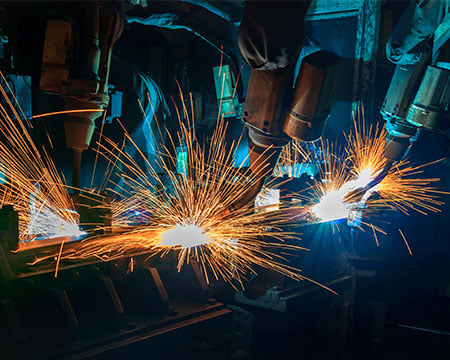We're Here to Help

The Benefit of the Research & Development Tax Credit for Manufacturing and Construction Entities
Businesses who are developing new products or processes or looking to enhance processes or products already in existence could greatly benefit from the research and development (R&D) tax credit. With the change in the corporate tax rate last year, organizations could see up to an 8 percent benefit, or $40,000 instead of the previous $35,000.
There are several benefits to consider with the R&D tax credit.
What is the research and development tax credit and how does it work?
The research and development tax credit was enacted in 1981 to promote innovation and keep jobs in the U.S. A major regulation change in 2003 opened the door for small to medium size businesses to take this credit. The benefit can vary based on a company’s fact pattern, but as a rule of thumb, a company with $500,000 of qualified R&D costs can see a credit benefit of $30,000 to $40,000. Many states also offer an R&D credit which can increase the benefit and can be refundable in certain states.
The R&D credit is a permanent credit and computed annually, providing a nice annuity for manufacturers and contractors taking advantage of the credit. R&D tax credits can be determined for the current year as well as for prior open tax years. The credit can also be used to offset Alternative Minimum Tax for companies with less than $50M in revenue—making the R&D credit more beneficial than ever.
Learn more about how we've helped clients work through research & development tax credit opportunities.
How do manufacturers qualify for the research and development tax credit?
Qualification for the R&D credit revolves around activities where the design is uncertain and there is an assessment of alternatives, whether it is the design, materials used, or how to apply technology in a new way to name a few.
Activities that could potentially qualify for the credit include:
- Development of new, improved, or more reliable products, processes, and techniques
- Development or improvement of production/manufacturing processes
- Development of prototypes or models (including computer-generated models)
- Design of tools, jigs, molds, and dies
- Development or testing of new concepts and technologies
- Development or customization of software
- Automation and/or streamlining of internal processes
How can manufacturers benefit from the research and development tax credit?
Manufacturers have seen great benefit from using the research and development tax credit.
Examples
How can construction entities benefit from the research and development tax credit?
Construction organizations have also seen great benefit from the research and development tax credit.
Examples
What information is needed to claim the research and development tax credit?
In general, you will need two types of documentation: quantitative documentation and qualitative documentation. To compute the credit, the company will provide quantitative data like wages for individuals involved in the R&D, as well as a percentage of time that they spend doing R&D activities. Time tracking can be helpful, but is not a requirement. Estimates are acceptable for determining the amount of R&D time.
The company will also provide total supply costs and third-party contractor costs related to the R&D. The information will be gathered for the current year as well as prior years to compute the credit.
Qualitative documentation is also needed to support qualified research and development activities. The company will generally provide the following types of qualitative documents: meeting notes, project charters, power point presentations, design documents, emails discussing technical challenges, drawing iterations, or test reports to support their R&D activities.
The Importance of research and development tax credits
Manufacturers and construction entities are constantly looking for ways to operate more efficiently, produce better products in a more convenient way and make smart and efficient decisions. The R&D tax credit can help today’s organizations create better processes for tomorrow.
Learn more about how the R&D Tax Credit can benefit your operation.

